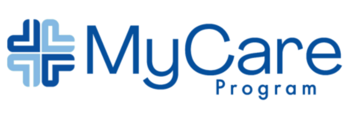Brief Overview: UTIs are the most common human bacterial infection with a huge economical impact. $3.5billion dollars annually in the US. Can be a mild infection with potential progression to urosepsis which is life-threatening. It can be lower urinary tract only, confined to the bladder and/or urethra, or extend up into the upper urinary tract involving ureters and/or kidneys. Recurrent UTIs are defined as 3 or more positive urine cultures within 12 mo. May be different bacteria each time or reinfection with the same pathogen. *Asymptomatic bacteria is 2 consecutive urine specimens with isolation of the same pathogen in the absence of symptoms.*
Prevalence: More common in females than males. Males are more resistant due to longer urethra, the antibacterial nature of prostatic fluid, and a drier periurethral environment. 44% of women who have a UTI will have a 2nd infection, 5% will go on to have a 3rd. Most UTIs in men are considered complicated, uncomplicated would be an isolated infection in a young healthy male. The risk of rUTI in men increases to >10% if over age 65.
Etiology: The most common pathogens are ecoli, klebsiella, enterococcus, proteus mirabilis, and pseudomonas. The most common spread is ascending, from the urethra and extending upwards. UTI occurs as a result of inadequate host defense mechanisms and bacterial virulence.
Risk Factors:
- Behavioral- Sexual intercourse, dysfunctional voiding
- urinary tract obstruction-medullary sponge kidney, diverticuli, ureteral obstruction, vesicoureteric reflux, bladder neck contracture, urethral stricture, BPH
- Physiologic- diabetes, pregnancy, neurological disease, postmenopause (atrophic vaginitis, decreased lactobacilli, incontinence, cystocele)
- Indwelling urethral catheter
- Uncircumcised males
- Urinary calculi
Common Symptoms:
- Simple UTI- general malaise, frequency, urgency, urge incontinence, dysuria, suprapubic pain/pressure, cloudy urine, foul smelling urine, hematuria
- Pyelonephritis-fever, chills, flank pain
Physical Findings: suprapubic pain. CVA tenderness with pyelonephritis. Men may have tender, boggy prostate gland upon DRE.
Common Labs, Imaging, and Tests:
- UA C&S. Midstream clean catch. If uncircumcised, retract the foreskin and cleanse. Value in collecting catheter urine specimen if recurrent infection to differentiate if contamination is likely (morbid obesity, elderly, fecal incontinence)
- Molecular UTI panels
- Renal ultrasound vs CT Urogram for contributing factors such as urolithiasis, urinary tract obstruction, and structural issues such as diverticuli.
- Cystoscopy for direct visualization of the bladder lining, diverticuli, stones, foreign body, etc.
- PVR for evaluation of emptying. Incomplete emptying high risk for rUTI.
- Pelvic exam for females evaluating for vaginal tissue atrophy, discharge, pelvic organ prolapse
- Acute infection-empiric antimicrobials, complicated infection typically treated 10-14d, longer if suspected prostatitis.
- Prevention-intravaginal or topical estrogen in postmenopausal females
- Supplements such as cranberry tablets BID, d-mannose, and probiotics-hard to find clinical studies to support
- Alternatives for recurrent infections:
- Self-start treatment-start 3-7d course as soon as symptoms start, contact prescriber if persist after 48hrs
- Postcoital prophylaxis
- Continuous prophylaxis. Typically rotate q90-180d to mitigate resistance. Commonly used-cephalexin, nitrofurantoin (PF risk, annual CXR if long-term use), doxycycline, and TMP (ok to use w/ sulfa allergy). Attempt antibiotic holiday as soon as possible.
Common Treatments: Treat any contributing factors such as stones when possible.
Potential Complications and Contraindications: Urosepsis, pyelonephritis, renal abscess, emphysematous pyelonephritis(diabetic or immunocompromised)
General Health and Lifestyle Guidance:
- The standard recommendation of 6-8 8oz glasses of water daily. Avoid irritants such as alcohol, caffeine, and sugar.
- Infectious disease guidelines recommend against re-culture or “test of cure”
- Void after intercourse. Hand and oral hygiene before and after sexual activity.
- Wipe front to back.
- Avoid tub baths
- Avoid “calling in for antibiotics”. Recommend testing with cultures each time symptomatic. Avoid overtreating asymptomatic bacteriuria. Home test kits can be a real challenge here.
- Avoid constipation by eating a high-fiber diet, hydration, and daily exercise.
- Are you hydrated?
- Do you have an indwelling foley? Review daily care.
- Are you at high risk for stones? Review general stone prevention.
- Are you completing antibiotics as prescribed?
- Do you feel that you are emptying your bladder?
- Often, patients can have inflammatory symptoms with high caffeine intake and poor hydration that will resolve with treating accordingly -avoid irritants and increase water intake.
